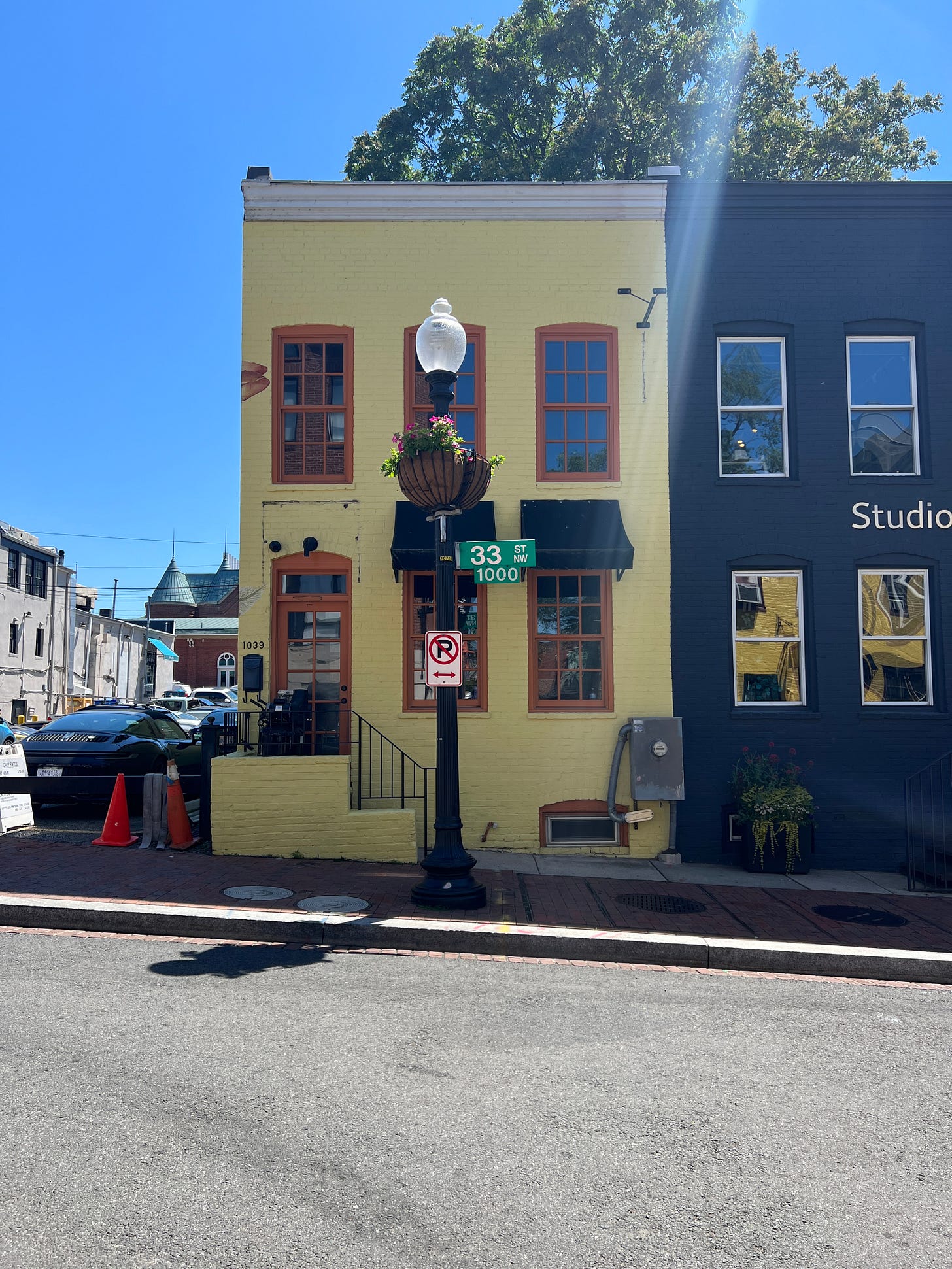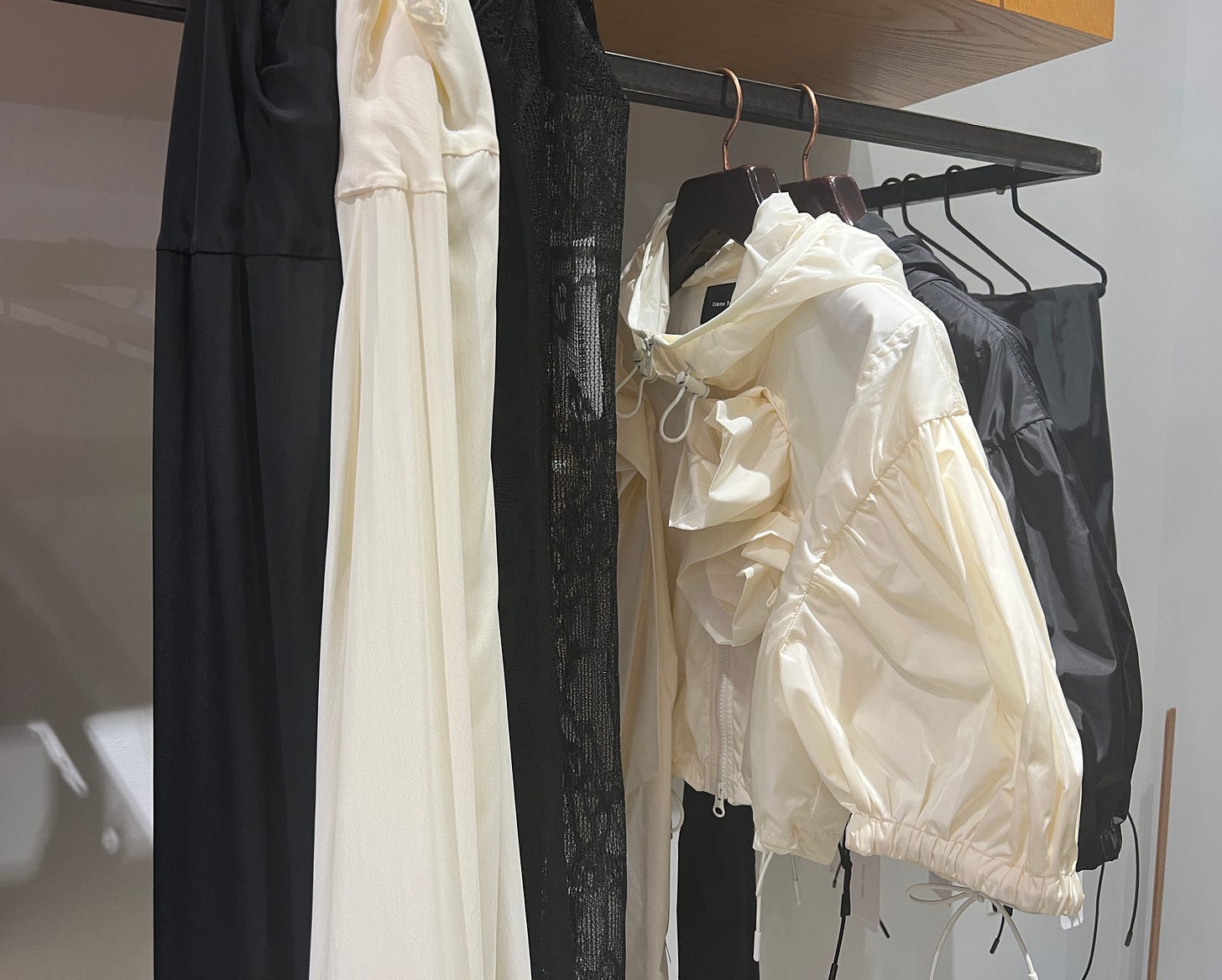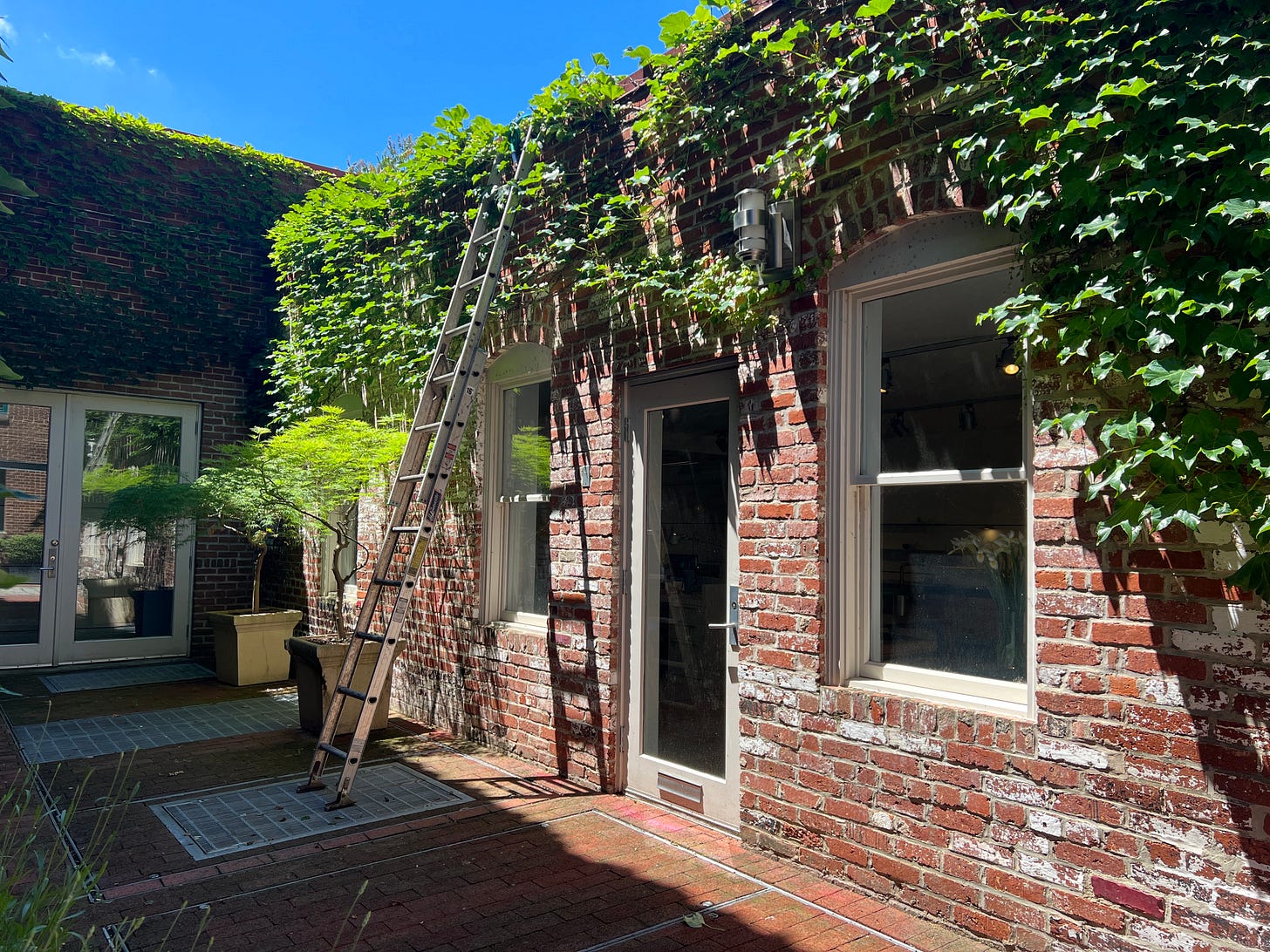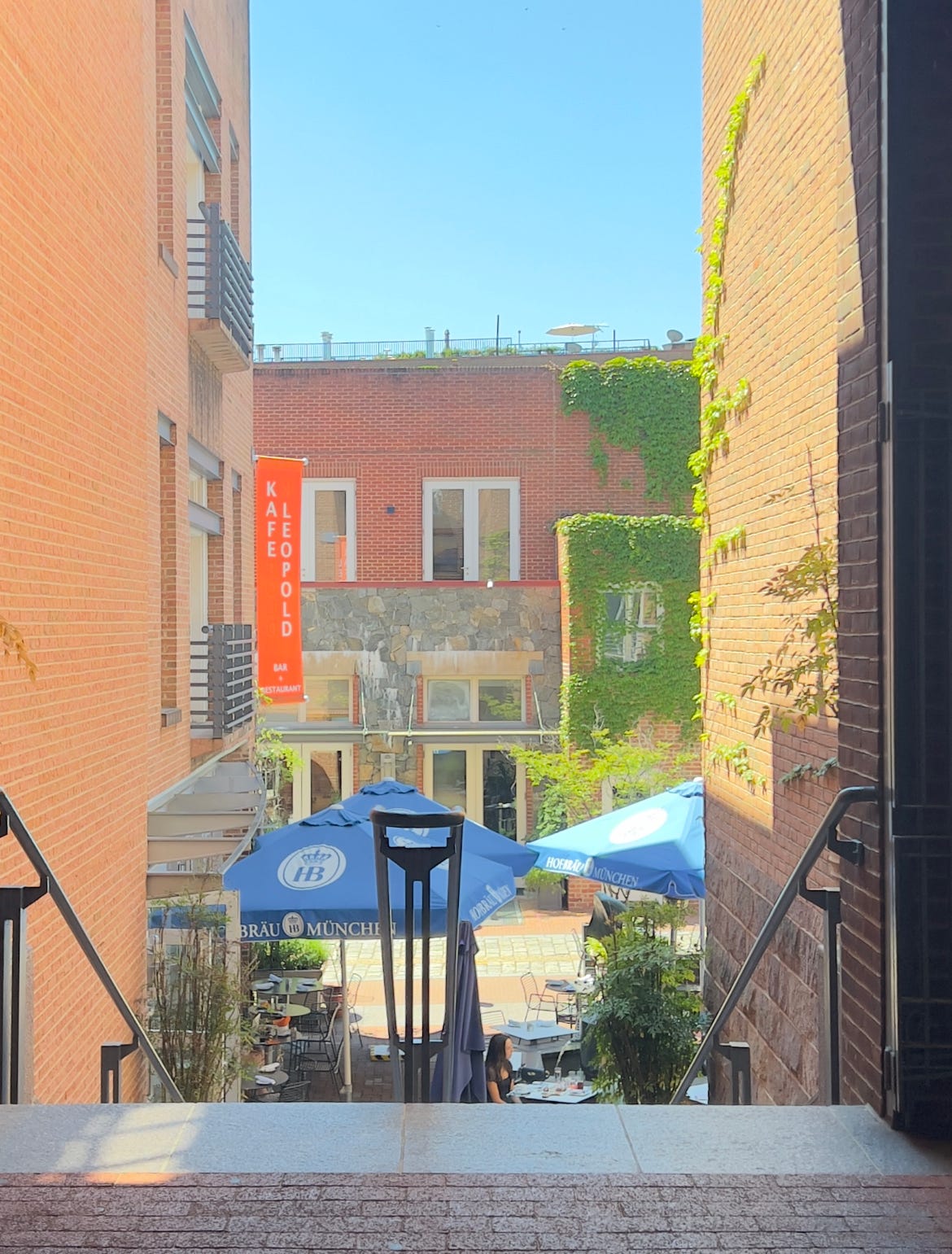I’ll make an admission: I find Washington, D.C. to be an exquisitely beautiful city. Yes, I love The Swamp. I am a swamp creature from the hinterlands, festooned with ferns and waterlilies. I have found most people here to be exceedingly tolerant, including those with whom I do not agree, and when I first moved here the sight of flags everywhere — on porches, taped to windows, on the chubby T-shirted bellies of tourists on the Mall — moved me to tears. I had been steeped in downtown New York during the pandemic, subjected to the sight of “ACAB” scrawled across too many doorways and sidewalks. And while I will always love New York, I was ready for a change. I worked in the fashion industry and in publishing retail, at stores including Phaidon (the art book press) and Opening Ceremony. Those places were all in SoHo, Manhattan’s Design District. So it seemed fitting that I should check out Cady’s Alley, in Georgetown — otherwise known as the Design District of DC.
It has often struck me as odd that there aren’t more sartorially inclined people in The Swamp. As I have written before, the most stylish denizens of the District are conservative men. They’re the ones you’ll see in navy blue suits and tan shoes. Most women have a chronic case of yoga butt (medical term: Lululemonemia) and “rock” a Jen Psaki blunt cut (barf). Why aren’t there more eccentrics? I suppose it’s because people who really care about style tend to migrate to cities where style is an industry. Still, in a city modeled on Paris (Washington was designed by French-born architect Pierre Charles L’Enfant) and graced with a gentle Southern charm, I hope there’s room for improvement.
Cady’s Alley is located at 33rd and 34th Streets, a block south of M. It’s a quiet, mews-like area, with luxury furniture retailers such as Design Within Reach, Blu Dot and BoConcept. There’s also a European-style cafe that gives haute-beer garden vibes called Kafe Leopold, and my favorite find, a high fashion multi-brand store called Relish. It stocks Simone Rocha, Dries van Noten, and Jil Sander, among others.
One bummer was that I chanced upon a storefront for The RealReal, the luxury consignment company and website where customers can cop designer stuff for affordable prices, but it was permanently closed. There were, in fact, many empty spaces along the Alley — and it was easy to dream of, say, an international magazine shop popping up in one of them.
Truth be told, I miss working in luxury retail. It was my excuse to be social as an inveterate introvert, and a way to obtain beautiful items I could never have bought on my own. I loved selling because I was genuinely enthusiastic (etymology: entheos, or “filled with God”) about the product. Selling is about eros and empathy. It’s about desire, and facilitating the exchange of something that will make someone else’s life better.
People like in-person shopping in part because they want to talk to someone random. I can’t count the number of times I was approached by a customer who presented with a hankering for a luxury handbag but who regaled me instead with tales of her estranged daughter, her thoughts on the local election, or her prolapsed uterus (really). And face it, your sales associate or your hairdresser or your cab driver is often a better interlocutor than your actual therapist. I loved this part of the job and I didn’t consider it unpaid “emotional labor.”
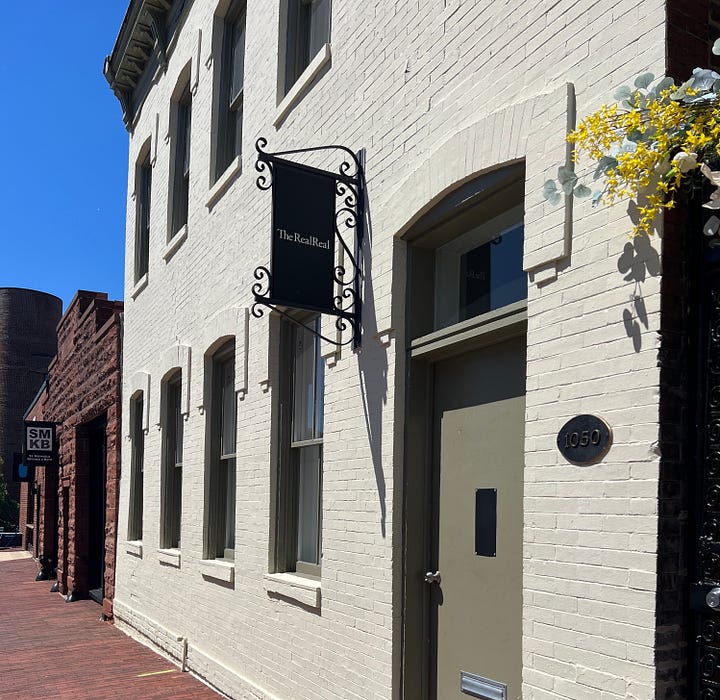

As I descended the staircase that leads to Kafe Leopold, I tried to catch an earful of the conversations happening beneath the blue umbrellas. One woman was delving into an exposition of her frustrations while her dining partner sat there murmuring, “That’s so real. Oh my God, yeah, that’s so real,” over and over. There were some people catching up over cappuccinos and some enjoying a full-course lunch. Around the corner, nearer to the waterfront, a man sat outside in a lawn chair doing remote work on a laptop and smoking a cigar. A sanitation worker walked by and shouted at him, “I see you, man! The sweet life!” And the cigar-smoker cackled in recognition.
I sat down for some quick refreshment at Blue Bottle, another nearby coffee shop where you can get a $7 latte if buying $8 orange juice at the grocery store every week isn’t enough of a thrill for you. The sun was frying my shoulders but I felt happy. Most people seemed to be in a good mood. Summer is on.
I thought about my reasons for starting this Substack, the genesis of which occurred (in true bohemian tradition) at another coffee shop — Ernesto’s, to be exact, on a corner of Henry Street in Manhattan’s Chinatown. My goal for several years had been to become a lifestyle journalist. I loved the fashion industry and it was home to me. But after the cultural shifts of 2020 I didn’t see a path forward in that milieu for someone who was passionately pro-life and unwilling to write about the “male gaze” (although I do sorely miss the male gays). Calling it The File (a reference to the 1990’s show “Fashion File” as well as Megyn Kelly’s mid-2010’s Fox show “The Kelly File”), my only objective at first was to create a repository for conservative, libertarian, heterodox, or even apolitical thought in the fashion and creative industries. I felt alienated and I needed to collect examples of artists who were going a different way. As time went on, I realized there was much more I wanted to write about. Like faith. And the country. And hope for a better economic paradigm.
The subtitle for my project, which is now called A New Heaven, started as “fashion, culture, and free expression.” Then I changed it to “faith, culture, and free expression.” Now it has settled on “faith, fashion, and free expression.” And there is a growing number of artists in my former industry and beyond who also see things differently (one example: Wisconsin-raised designer Elena Velez, responsible according to Elle Magazine for “Bringing the Rust Belt to the Front Row”).
When I was living in upstate New York during the Trump years, I made a zine about fashion in rural areas and the phenomenon of creative people moving to the countryside.
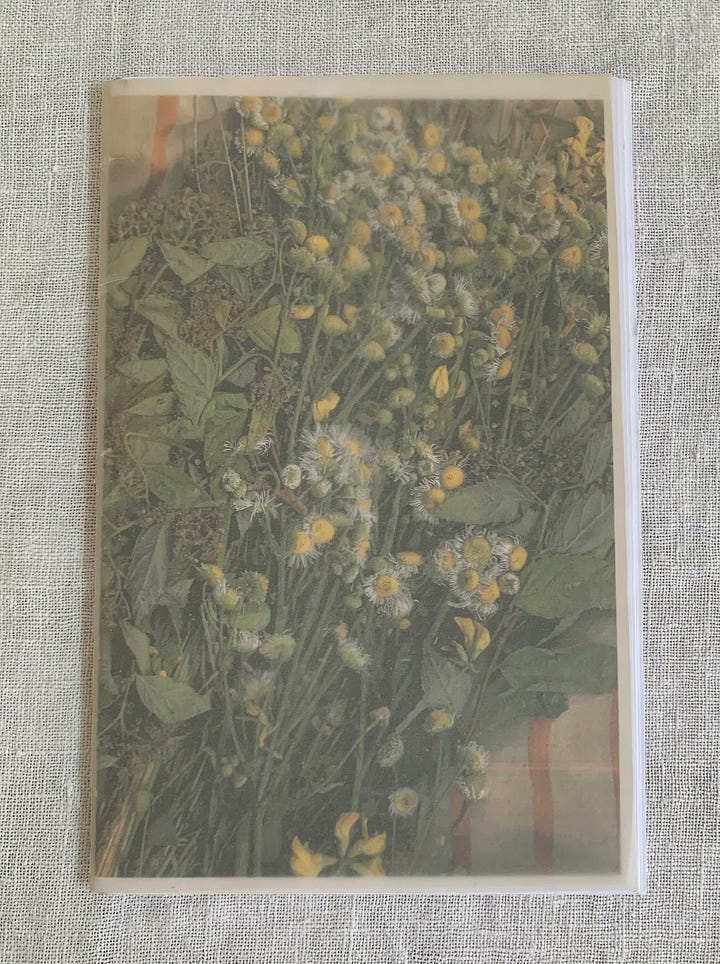
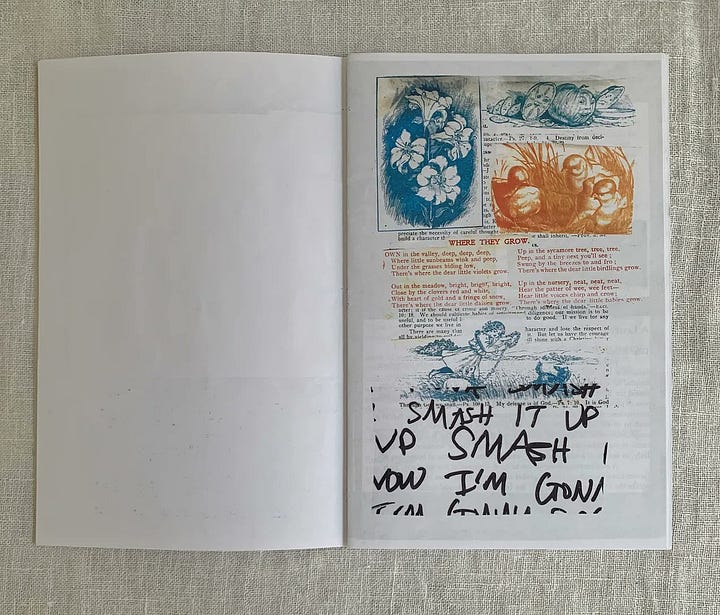
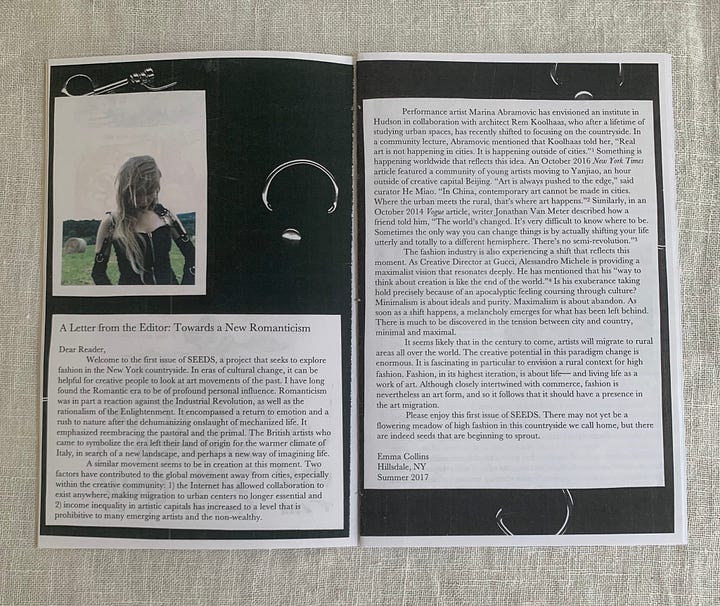
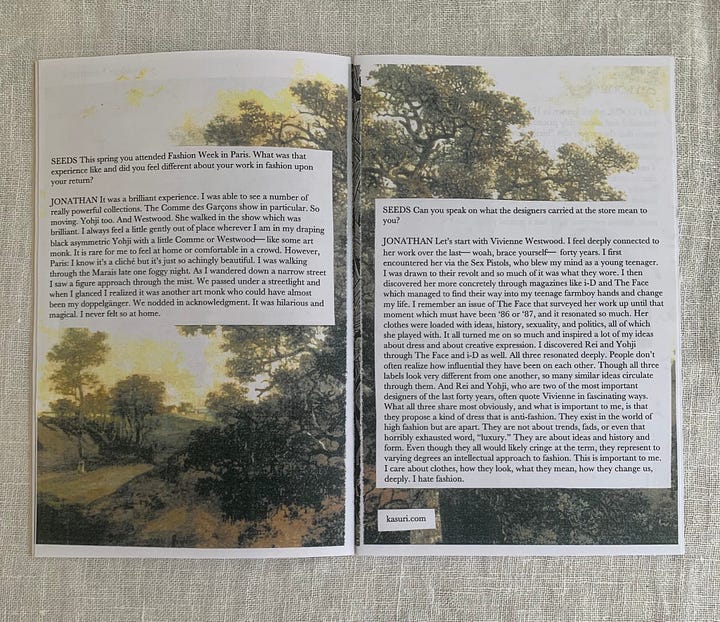
In those days I often spent my evenings watching online panel discussions by the fashion platform SHOWstudio. Nick Knight, its founder and a legendary photographer, once said of the brand Rodarte that “they’re actually very, very American and they show a very interesting vision of the American woman, which isn’t the kind of Calvin Klein or the Ralph Lauren woman, it’s a woman of the Badlands and the Midwest.” Publicist and co-panelist Mandi Lennard agreed, calling the aesthetic “New America.” This is a style of our own that doesn’t try to look European or even urban — it’s more Andrew Wyeth than Alexander Wang.
What would an investigation of aesthetics and culture look like from the perspective of a modern Christian conservative? How can one live a truly spiritual life — even an ecstatic or mystical life — without completely rejecting the world? These are my questions.
And what is the point of writing, anyway? I’ve addressed it before. I believe that people are looking not only for information or entertainment but for hope and a way out of despair. I certainly know that it’s the writing of great authors (my favorites of all time being Andrew Sullivan and Katie Roiphe) that gave me the courage to go on living, whose words reached into my soul some dark night when I huddled beneath the covers with my iPhone or a tattered book. Several years ago, I considered becoming a social worker and I learned to facilitate support groups. One of them was called “Alternatives to Suicide.” That’s what writing is — an alternative to death. Or as leftists call it, radical non-existence.
It’s become very popular to imagine alternative ways of life. I’ve certainly spent years doing this. Being goth, dreaming of a Benedict option, wondering about being a monastic, researching homesteads. But what if the society we’re living in now is the alternative? To not being alive, that is. Or to giving up. Is it more authentically Christian to reform society or to embrace it in all its messy impurity?
In his classic “Franny and Zooey,” J.D. Salinger’s 1955 novella about a young woman’s spiritual crisis and subsequent decision to re-devote herself to her calling and profession, the author introduces a concept called the “Fat Lady.” The Fat Lady, as Franny’s brother Zooey describes her, represents anyone who’s part of an audience — anyone who’s hearing what we’re saying or buying what we’re selling. And she needs what we have to give. The Glass family in which Franny and Zooey were raised were radio stars, and the elder siblings taught the younger members to always imagine this proverbial listener when they went on air. Zooey explains the image: “I had her sitting on this porch all day, swatting flies, with her radio going full-blast from morning till night. I figured the heat was terrible, and she probably had cancer, and —” Franny agrees. “I didn’t ever picture her on a porch, but with very — you know — very thick legs, very veiny. I had her in an awful wicker chair. She had cancer, too, though, and she had the radio going full-blast all day! Mine did, too!” Zooey concurs. “There isn’t anyone out there who isn’t” this proverbial audience member. And that’s why we do our work and why we give it our best. We’re all the Fat Lady (except for those of you on Ozempic).
Over the past year I’ve received a number of very nice pledges. There are a lot of highfalutin’ intellectuals who read this blog, which is both intimidating and exciting. Thank you to those of you who have written to me and professed your admiration. I am always open to your feedback. I will start accepting pledges on June 1st, which gives you time to adjust or cancel if necessary. For now all content will remain free, but this may change in the future. I appreciate your readership, and I pray for you.
Happy Memorial Day — and may God continue to bless America.




